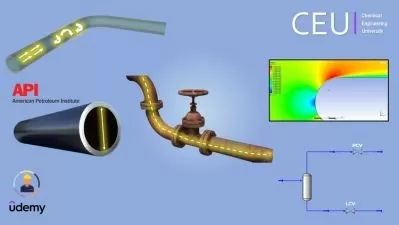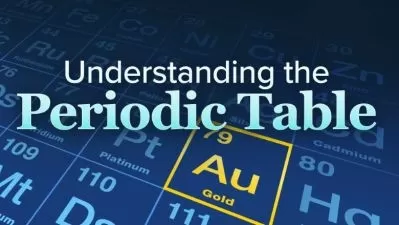Compressor Operation for Chemical Process Engineers
Boostrand Training
1:36:05
Description
See how centrifugal and reciprocating compressors work, understand their operation, main issues and control methods
What You'll Learn?
- Main differences between pumps and compressors
- Main compressor types
- When to use more than one stage of a compressor
- Performance curves of both dynamic and positive displacement compressors
- Surge scenario and best practices to avoid it
- Compressor stonewall
- Dynamic compressor methods of control
- Reciprocating compressor methods of control
Who is this for?
What You Need to Know?
More details
DescriptionCompressors are the main equipment used to transfer gases and raise their pressure. They are used in many different applications. You'll see compressors in the oil and gas industry, whether in midstream or in downstream refineries, in petrochemical plants and in many other chemical processing applications.Â
Compressors are relatively expensive compared to other pieces of equipment in a process plant. That’s why it is always important to understand their types, how they work, their main issues, and how to overcome them.
This course will try to cover the main compressor principles. We shall see how each of these principles works in the case of both centrifugal and reciprocating compressors.
We shall see how compressing gases which are compressible differs a lot from pumping incompressible liquids.
We shall go through dynamic compressors and their types, then positive displacement compressors and their types. This shall be through comparisons showing the advantages and disadvantages of each type.
In this course, We shall see how the compressor curve works and how to plot it against the system curve for both dynamic and positive displacement types.
We will see how the compressor and the process system interact with each other and how the compressor responds and interacts with process changes or disturbances.
We shall go through compressor surge, its effects, and best practices to avoid it.
We shall see different control methods to make sure we are on the required compressor operating point. This shall also include both centrifugal compressors and reciprocating compressors.
Who this course is for:
- Students in any engineering school
- Anyone interested to know more about compressors from operational point of view
Compressors are the main equipment used to transfer gases and raise their pressure. They are used in many different applications. You'll see compressors in the oil and gas industry, whether in midstream or in downstream refineries, in petrochemical plants and in many other chemical processing applications.Â
Compressors are relatively expensive compared to other pieces of equipment in a process plant. That’s why it is always important to understand their types, how they work, their main issues, and how to overcome them.
This course will try to cover the main compressor principles. We shall see how each of these principles works in the case of both centrifugal and reciprocating compressors.
We shall see how compressing gases which are compressible differs a lot from pumping incompressible liquids.
We shall go through dynamic compressors and their types, then positive displacement compressors and their types. This shall be through comparisons showing the advantages and disadvantages of each type.
In this course, We shall see how the compressor curve works and how to plot it against the system curve for both dynamic and positive displacement types.
We will see how the compressor and the process system interact with each other and how the compressor responds and interacts with process changes or disturbances.
We shall go through compressor surge, its effects, and best practices to avoid it.
We shall see different control methods to make sure we are on the required compressor operating point. This shall also include both centrifugal compressors and reciprocating compressors.
Who this course is for:
- Students in any engineering school
- Anyone interested to know more about compressors from operational point of view
User Reviews
Rating
Boostrand Training
Instructor's Courses
Udemy
View courses Udemy- language english
- Training sessions 28
- duration 1:36:05
- Release Date 2022/11/26











